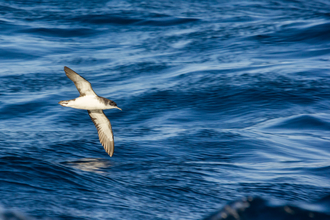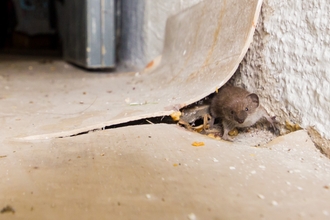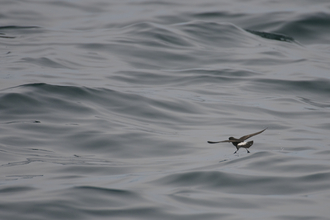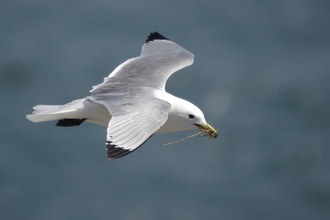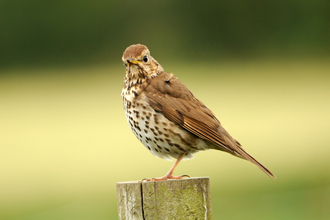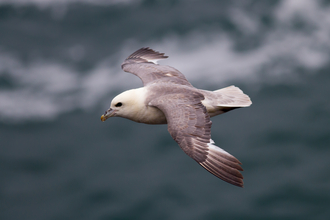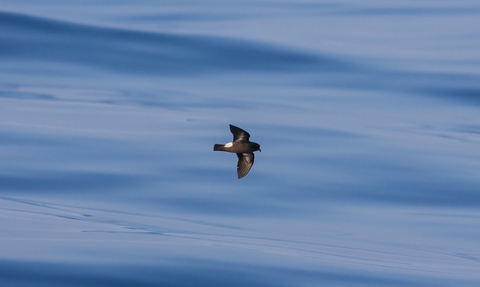
Biosecurity
Protecting flora and fauna
Scilly's flora and to a certain extent fauna is a melting pot of native and non-native species, many of which people know and love. In some instances and where necessary, we work on our tenancy and with local land managers to protect native wildlife from the impacts of harmful invasive species.
Scilly's flora and to a certain extent fauna is a melting pot of native and non-native species, many of which people know and love. Generally, these species can coexist without causing an impact, however others are more of a cause for concern. In some instances, we work on our tenancy and with local land managers to remove some non-native species, like pittosporum, that may out-compete local native plants. In other instances, we work with island residents, visitors and businesses to ensure that new invasive species don't make it to the archipelago at all. Scilly has always been protected by the 28 miles of water between the islands and Land's End. Many diseases and species, which are now causing problems on the mainland, haven’t reached Scilly. It is important that the islands remain the haven for native flora and fauna.
Elms are one species we are keen to protect, as Scilly has one of the few remaining disease-free populations in the UK. Mainland elms are currently threatened by Dutch elm disease (a fungi transmitted by elm bark beetles), originating from Asia, and elm zigzag sawfly originating from Japan/China. Both non-native invasive species have a devastating effect on elms, ultimately causing the death of the tree and impacting populations of native insects that rely on elms.
Honeybees are amongst our most useful and much loved pollinators and are under threat from Colony Collapse Disorder (a phenomenon linked to disease, stress & loss of natural habitat) leading to the loss of whole colonies, and varroa destructor (an external parasitic mite which attaches itself to honeybees), which at it's worst can destroy whole colonies. Local beekeepers are vigilant, sourcing their bees from disease-free suppliers and sending bees away for testing regularly to ensure they are disease-free.
Ladybirds are natures pest-controllers and are much-loved by gardeners. However, they are under threat from the non-native harlequin ladybird. Harlequin ladybirds pose a threat as they have such voracious appetites, easily out-competing native ladybirds for food and also eating their larvae and eggs. To date there have been two confirmed sightings recorded in Scilly, but it appears they were lone travellers and have not bred.
Find out more about biosecurity on Scilly and how you can help keep our islands secure.
The Isles of Scilly Seabird Recovery Project
Following the success of the Isles of Scilly Seabird Recovery Project (2013-17), biosecurity remains in place across St Agnes and Gugh. Such projects require the long-term involvement of island communities to maximise the chances of the islands remaining rat-free. Measures to reduce the likelihood of an incursion include ensuring that high risk goods brought to the island (e.g. animal feed and hay) are checked both on St Mary’s and on arrival on the islands, ensuring good waste management, and at all times remaining vigilant for rat sign and encouraging all visitors to do the same.
Following the end of the removal phase, 100 permanent monitoring stations were left in place on St Agnes and Gugh and they are checked by community volunteers monthly. These stations house pieces of non-toxic chocolate wax which are very attractive to rats. If a rat does arrive on the islands they may be attracted to the wax and leave teeth marks which can be detected when the stations are checked.
If there is an incursion (detected through teeth marks, any other rat sign such as droppings or a sighting of a rat) the response will be to set up a 50m baiting grid in the immediate area. Special interpretation signs around the islands will let you know if there is bait on the islands.
We are delighted to work with the residents of St Agnes and Gugh and partners to ensure that biosecurity remains tight across the islands and that Scilly's seabirds continue to thrive.

